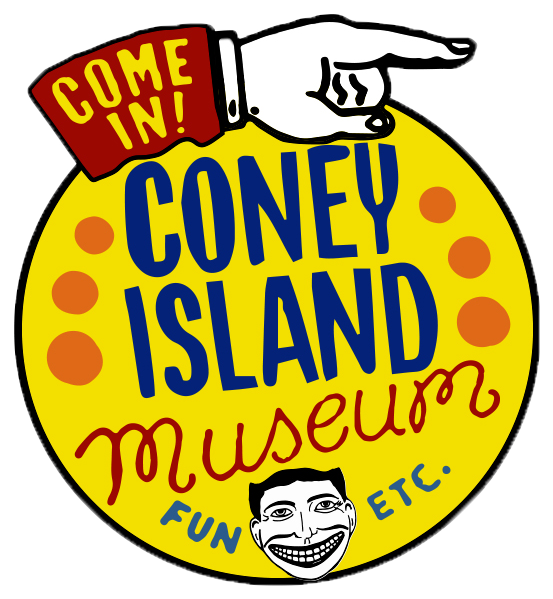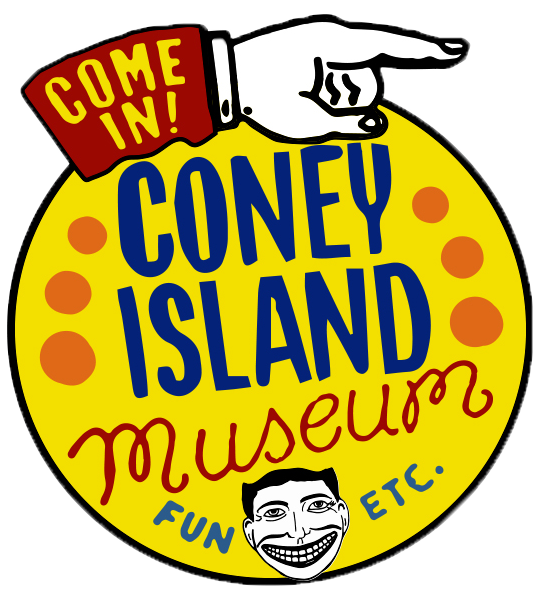Weegee’s Coney Island
Weegee, the pseudonym for Arthur Fellig, is known for his tabloid-esque crime scene photographs that are reminiscent of a classic noir film. His entire persona was built around crime in New York, so much so that legend has it that he was dubbed “Weegee” after his seemingly supernatural ability to appear at crime scenes quickly. He could predict death like an Ouija board. He documented the seedier and tragic side of New York City during the 1930s and 1940s, but he also captured the heart of New York City from the perspective of someone who truly loved the City and the people that encapsulated it.
One of Weegee’s most recognizable photographs is of the Coney Island beach covered in an endless sea of beachgoers. It’s one of the first photos that come to mind when thinking of the bygone era of Coney Island.
Weegee, [Afternoon crowd at Coney Island, Brooklyn], July 21, 1940; On view at the Coney Island Museum
It’s a common misconception that the iconic photo of the beach full of people was taken on July 4th weekend, when in fact the photo was taken a few weeks later, on a hot weekend at the end of July.
The photo ran in the short-lived newspaper, PM, on Monday, July 22, 1940, under the headline “Yesterday at Coney Island...Temperature 89…They came early, stayed late”. In the article, Weegee talks about knowing the beach was going to be busy when he arrived and couldn’t find a legal or illegal parking spot, and he was bitter that parking lots were price gouging up to $1 from the typical 25 cents. To close out the article, Weegee details everything he consumed that day.
“While I was at Coney I had two kosher frankfurters and two beers at a Jewish delicatessen on the Boardwalk. Later on for a chaser I had five more beers, a malted milk, two root beers, three Coca Colas and two glasses of buttermilk. And five cigars, costing 19 cents.”
Over 80 years later, not much has changed…except the prices have gone up a little. Coney Island is still the best place to beat the summer heat.
Weegee did take a photograph of the crowd on a 4th of July weekend, in 1942. This photo has the more expected Weegee flair for the strange mixed with a splash of humor. The photo includes a man standing on the shoulders of sailors, wearing a heavy, dark mask. An odd choice for a hot beach day. According to Weegee, the man would only be photographed “incognito” and enjoyed the hobby of frightening people. The man’s other life was as a laundry man.
Weegee, [Crowd at Coney Island beach, Brooklyn], July 4, 1942; International Center of Photography
Weegee, [Lost Children Shelter, Coney Island, Brooklyn], June 9, 1941; International Center of Photography
While in Coney Island, a popular location for Weegee to photograph was a location under the boardwalk where lost children were brought. On a crowded beach day, there could be over 100 children. In Weegee’s 1945 photo book Naked City, he sets the scene…
“Of the families, some manage to get through the day without losing their children…but the city is prepared and at the Lost Child Shelter the crying kids are kept cooped up behind a barrier of chicken wire till their parents call for them…also in this shelter are kept the peddlers who are arrested for peddling on the beach…seeing their merchandise melt, the peddlers give their ice cream to the kids.”
Weegee, [Park Department attendant with lost child, Coney Island, Brooklyn], June 9, 1941'; International Center of Photography
The mysteries of New York after dark is the atmosphere Weegee is most known for, and those adventures extended to Coney Island. He would roam the beach photographing lovers in the dark using infrared film. The infrared film allowed him to photograph in the darkness without anyone noticing. Despite the photographs depicting the youth and bliss of the living, the photos are visually similar to his photos of death on the sidewalks of the big, bad City. The photos are of couples, but they still feel lonely, isolated, and almost menacing.
Weegee, [Lovers on the beach, Coney Island], 1940; International Center of Photography
“It was after midnight and jet black. One of those nights when the moon forgets to come out…but the sweethearts like that…Once in a while I would hear a giggle or a happy laugh, so I aimed my camera and took a pictures in the dark using invisible light.” (Naked City, 1945)
Weegee, [Lovers at Coney Island, Brooklyn], 1944; International Center of Photography
Weegee, [Girl on lifeguard station, Coney Island, Brooklyn], 1940; International Center of Photography
“I walked nearer to the water’s edge and stopped to rest against a Life Guard Station look-out. I thought I heard a movement from above to I aimed my camera high and took a photo, thinking it was a couple…When I developed the pictures, I saw that the only occument on the look-out had been a girl looking dreamily towards the Atlantic Ocean….What as she doing there alone among all the lovers?...” (Naked City, 1945)
Weegee’s 1948 city symphony, Weegee's New York, is a characteristically unexpected project from Weegee. The 21-minute color film shows New York from Weegee’s perspective, with a surprisingly cheery and vibrant tone. The final 13 minutes of the film are dedicated to Coney Island, where “A million people on the beach of a Sunday afternoon, is normal”. The segment shows not only the number of people that can fill the beach and the fashion of the times, but also the diversity that Coney Island attracts. It shows people from all walks of life and backgrounds converging to beat the heat in the City, not all that different from today.








